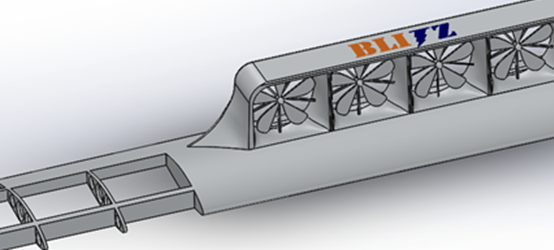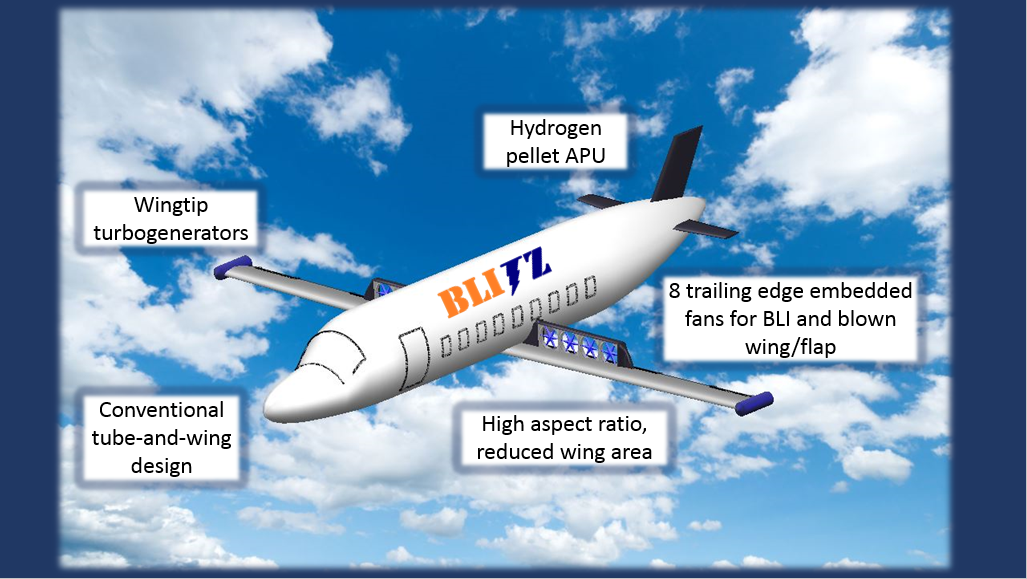BLItz (2015-16)
Summary
In Aerospace Design I & II (senior undergraduate capstone classes, Fall 2015 & Spring 2016), I worked with a team of ~12 engineering students. We developed a novel passenger plane concept which utilized a unique type of propulsion called distributed electric propulsion. Named for the high-efficiency concept it integrated (boundary layer ingestion (BLI)), BLItz won 1st place in a NASA competition.

Key Skills
- Estimation
- Team management (propulsion team lead)
- Design process - idea generation to detailed design

Problem
NASA put out an annual design challenge for university student teams. The focus of the 2015-16 challenge was distributed electric propulsion, a novel and mostly untested propulsion concept. We were tasked with putting together a comprehensive report describing the technical attributes (including details like range, fuel consumption, and power architecture) of a novel plane, as well as a brief business plan for entering the market.
Design Objectives
- Utilize distributed electric propulsion
- Several technical specifications, including 19 passenger capacity, 250 mph cruising speed, and 28,000 ft service ceiling
- Team chose Dornier Do 228 as current market comparison
Process
In the first semester of the class, we focused on brainstorming.
At the time (2015), distributed propulsion was considered very novel and there was a limited amount of research (not to mention built and tested aircraft) for us to reference.
In the second semester, having chosen one concept, we split into sub-teams (aerodynamics, propulsion, and performance) to flesh out our design.
As propulsion team lead, I presented weekly design updates to the full class, summarizing our accomplishments and detailing next steps.
Our team had decided on fans distributed along the length of the wing (pictured), and I led the estimation of the diameter of these fans.
There were many ways to back-calculate the fan diameter, such as by targeting required thrust or desired fan tip speed or by scaling from existing aircraft fans.
These calculations produced a huge range of sizes, with no clear correct answer.
In order to validate fan sizes, I used comparisons with the few distributed propulsion planes in existence and other downstream metrics (like power required).
The fan size estimation process took many weeks and significant collaboration with an experienced industry engineer.
This process made me greatly value the engineering skill of estimation.

Results
Our team won 1st place (out of 17 teams) in the 2015-16 NASA University Aeronautics Design Competition.
Competition winners announcement
BLItz abstract
